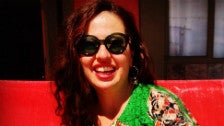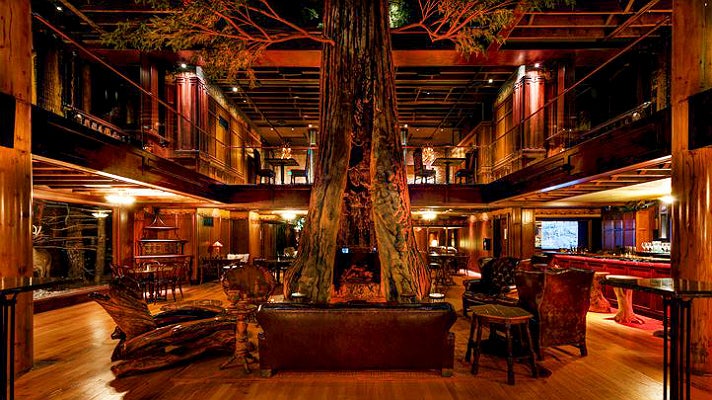Opened in 1935 as Clifton's Brookdale, Clifton's Cafeteria was the second in a chain of theme restaurants founded by Clifford Clinton. As the child of restaurateurs and devout Christians who had self-funded a mission to China, Clinton was especially sensitive to the Great Depression's human toll, which he saw every day. Sure, he hoped the over-the-top décor would give his venture a competitive edge, but he also saw the restaurant as a beacon of hope, committed to serving the poor, the tired, the huddled masses yearning to eat free. Patrons could pay whatever they wanted and a sign invited them to "Dine Free Unless Delighted."
Many were. At its peak, Clifton's reportedly served more than 10,000 people a day. The food was simple: Salisbury steak, sliced turkey, mashed potatoes, mac and cheese, cubes of Jell-O.
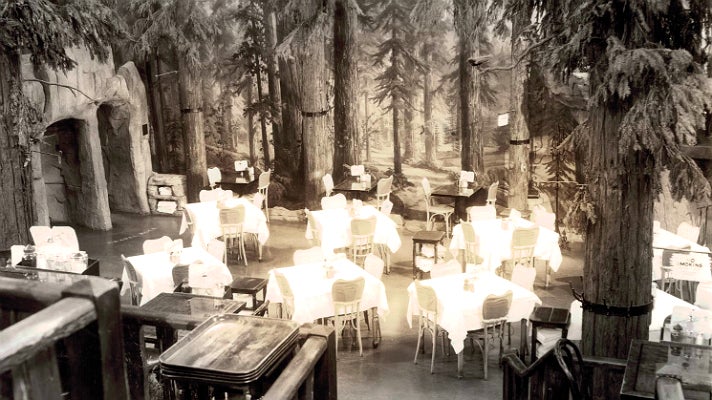
How magical would it be to instantly trade the sidewalks and steel of an urban downtown for a woodland utopia? Clifton's spanned 16,000-square-feet of faux redwoods, frolicking forest creatures, scenic murals, a brook babbling with limeade and a 20-foot waterfall cascading over artificial rocks. To say that Clifton’s was unique is like saying LeBron James is a pretty decent basketball player. Imagine a larger-than-life diorama designed by Walt Disney on a Pine Sol-fueled bender. Simply put, it was unlike any other restaurant in Los Angeles.
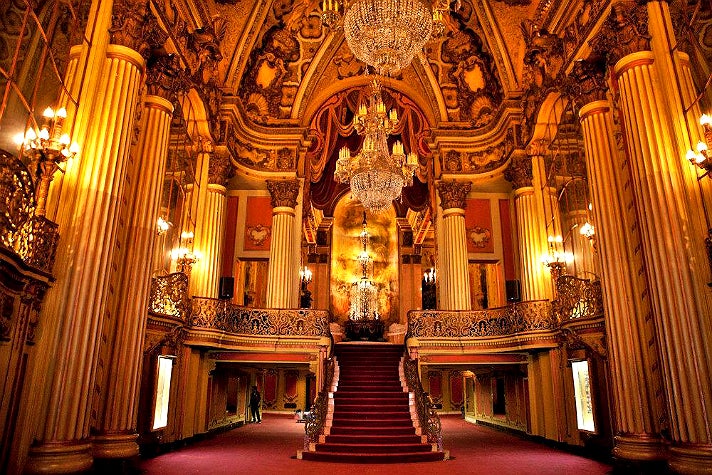
In the 1930s, Downtown was the business and social hub of Los Angeles. Gorgeous buildings housed the city's most powerful banks while grand movie palaces screened cinema blockbusters to thousands of patrons. Attractions such as Olvera Street, Angels Flight and Pershing Square brought visitors to the area. Charming, cluttered and kitschy, Clifton's added to the allure. The woodland utopia became a favorite of tourists and locals alike.
After World War II, Downtown L.A.'s fortunes began to decline. Crime increased and many of the area's residents relocated to the suburbs. By the 1980s, the once-vibrant neighborhood had lost much of its appeal. But Clifton's maintained a devoted base of local fans, with generation after generation returning to the place. Clinton died in 1969 and by 2006, the Clifton's on Broadway was the only location in the once-thriving chain.
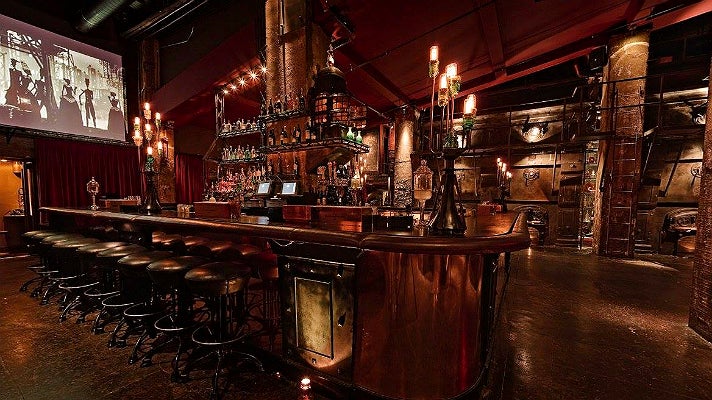
Clinton's heirs continued to run the restaurant, under increasing financial pressure, until 2010, when they sold it to Andrew Meieran, a businessman and nightclub impresario with a preservationist bent. Meieran was among the first wave of developers who set their sights on downtown in the late '90s, when the city passed an adaptive reuse ordinance that made it easier to transform the neighborhood's historic buildings. In 2000, he opened The Edison, a snazzy, subterranean bar carved out of a former power plant that had been built in 1910.
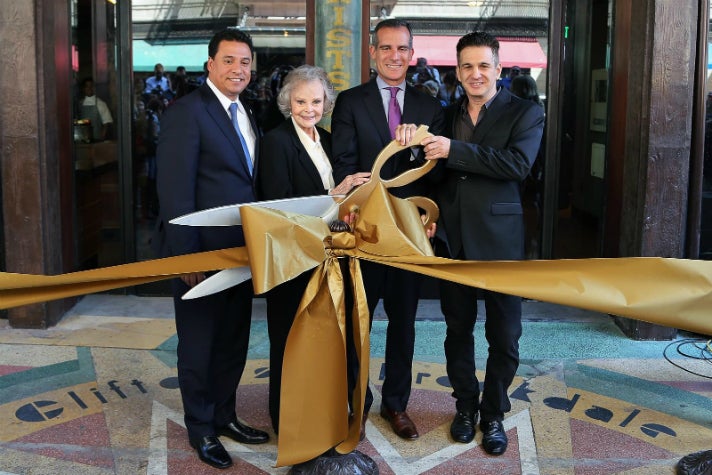
For Clifton's, Meieran had originally envisioned a thoughtful but relatively quick revamp that would keep the historic restaurant open throughout the renovation. After a four-year closure and a $14 million overhaul, Clifton’s Cafeteria reopened to the public on Oct. 1, 2015.
You'll still find the famous animatronic raccoon. But you'll also spot plenty of new attractions.
It starts outside, with the building's original stained concrete facade, which was unveiled in 2012 after being encased in metal for nearly 50 years. Inside, the wonders begin underground in the Shadowbox speakeasy. Located in the basement, the bar is decorated with fossilized dinosaur eggs and a five-foot-long amethyst geode.
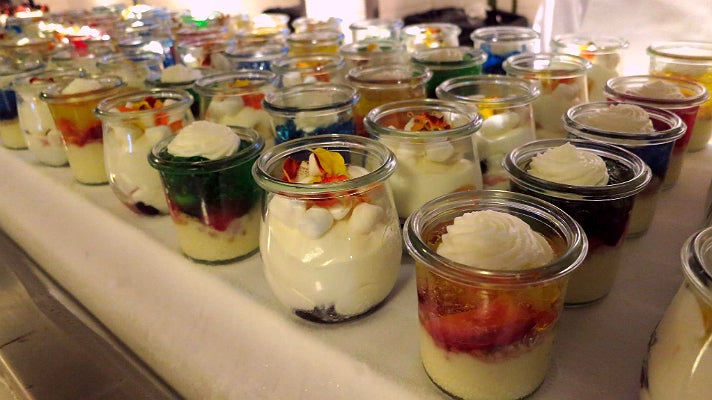
On the ground floor, the revamped cafeteria should feel familiar to anyone who's ever grazed at the deli section of a high-end supermarket - except that this cafeteria will stay open until 2 a.m. every day. Look for new dishes like the Catalina bison patty melt as well as updated classics like the Waldorf salad and mac & cheese. And yes, you will still be able to get Jell-O. The ground floor is also occupied by The Mill bakery, which serves Verve coffee, and a gift shop stocked with wine, chocolate, dates and other California-produced edibles.
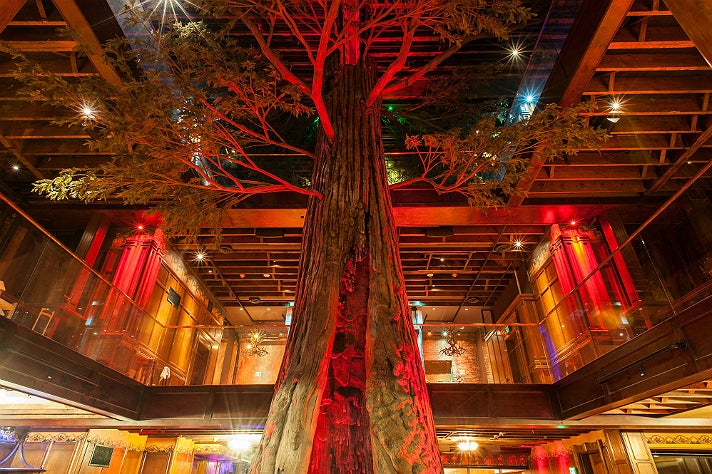
On the second floor you'll find the Monarch Bar, which serves craft beer, sodas and floats, as well as a miniature chapel designed for kids. (Sadly, the neon cross that illuminated the original was broken during renovations.) The other major attraction will be hard to miss. At the center of an atrium that Meieran cut into the building stands a 40-foot-tall fake redwood tree. Its base is located near the Monarch Bar on the second level and it reaches up to the ceiling with reinforced branches designed to hold aerialists.
The third floor is home to the Gothic Bar, which features a booth named after sci-fi writer Ray Bradbury, a patron of the original Clifton's who became a pal of Meieran's. Belly up to a 19th-century gothic altar-turned-bar for cocktails created by bartenders Damian Windsor and Dustin Newsome. The third floor also features Clinton Hall, a ballroom space intended for private events, and lots of taxidermy dioramas created in consultation with experts from the Natural History Museum.
On the fourth floor, offices are currently being transformed into a steakhouse and two more bars, including a tiki-themed one. The tiki bar reportedly features Polynesian décor that Meieran bought from Bahooka, a popular Rosemead bar that closed in 2014.
While the new Clifton's won't offer free meals, Clifford Clinton's original mission hasn't been ignored. At the bottom of each check, customers can add a donation that will subsidize one low-cost dish each day.
The idea was to create a multi-story playground: bars for cocktail enthusiasts, grottos for kids, dining rooms for private parties, spaces that create a sense of wonder in every nook and cranny - just like the original Clifton's.


